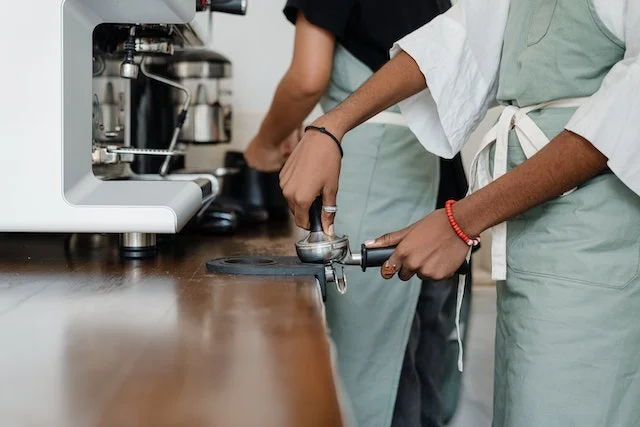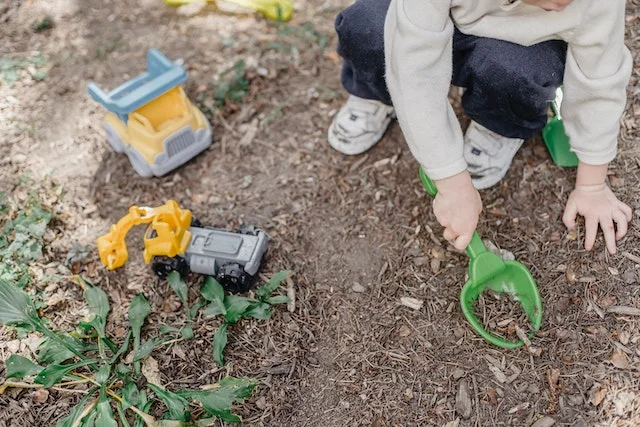Are Coffee Grounds Good for the Garden?
Coffee grounds have been used by more people as a fertilizer and soil amendment for gardens in recent years. But do coffee grounds really help your plants and soil, or is it all just myth? As avid coffee drinkers and gardeners, we decided to dig through the research and test coffee grounds ourselves to determine if and how to use coffee grounds in the garden effectively.
Key Takeaways
- Nutrient-Rich Fertilizer: Coffee grounds provide essential nutrients for plants, acting as a natural fertilizer.
- Soil Enhancement: They improve soil structure, promote beneficial microbes, and enhance water retention.
- pH Control: Fresh grounds are acidic; composting or balancing with lime helps avoid pH issues.
- Versatile Usage: Coffee grounds can be used as soil additives, compost, mulch, and targeted plant fertilizers, with proper application methods.
An Overview of Using Coffee Grounds in the Garden
Before we look at the details, here is a quick overview of using coffee grounds in the garden:
- Coffee grounds contain nitrogen, potassium, phosphorus, and other nutrients that plants need to grow. This makes them useful as a fertilizer.
- They can help improve soil structure and drainage when mixed into the soil, thanks to added organic matter.
- Acidity level is a consideration, especially for plants preferring neutral or alkaline soil. Composting first can help neutralize pH.
- Coffee grounds alone are not a balanced fertilizer – they are high in nitrogen but low in phosphorus. Supplement with a complete fertilizer.
- Use coffee grounds in moderation as too much can overload the soil. No more than 20% by volume mixed into soil is a good rule.
- Composting grounds first allows the nutrients to break down and become more available to plant roots.
- Coffee grounds can be used in compost piles as a green source of nitrogen. Mix with carbon-rich brown materials.
With proper application, coffee grounds can be a boost to the garden. Now let’s explore the details!
Do Coffee Grounds Provide Nutrients for Plants?
The main benefit of using coffee grounds for gardens is the nutrients they provide. Coffee grounds contain the key macronutrients nitrogen, phosphorus, and potassium that all plants need to grow and be healthy. Here is a breakdown:
- Nitrogen: Helps plants produce chlorophyll for photosynthesis and promotes green, leafy growth. Coffee grounds are rich in nitrogen.
- Phosphorus: Important for root, flower, and fruit development. Low amounts in coffee grounds.
- Potassium: Crucial for plants’ tissues, cells, and metabolic processes. Moderate amounts in grounds.
Coffee grounds also have other trace nutrients like magnesium, copper, and calcium. Their nutrient value comes from the coffee beans themselves as well as any additives like coffee creamer or sweeteners.
This table summarizes the typical nitrogen, phosphorus, and potassium (NPK) ratio in used coffee grounds:
| Nutrient | Percentage |
| Nitrogen | 2.00% |
| Phosphorus | 0.06% |
| Potassium | 0.60% |
The high nitrogen content is valuable, but low phosphorus means grounds are not a complete fertilizer by themselves and should be paired with other sources of phosphorus.
Do Coffee Grounds Change Soil pH?
In their fresh form, coffee grounds are acidic with a pH of around 4.5-6.5. This acidity level is due to the natural acids present in coffee beans (the pH level will vary depending on the age of the grounds, type of bean, roast level etc).
When first applied to soil, the grounds can cause a slight drop in pH, which may negatively affect plants that prefer neutral or alkaline soil. However, when given time to break down, the acidity of the coffee is ameliorated.
Here’s a look at how pH changes over time after application:
- 1 week after application – Slightly more acidic pH of 6-6.5.
- 1 month after – pH neutralizes closer to 7.
- 3+ months after – No significant impact on pH.
Because of the initial acidity, it’s best to compost coffee grounds for at least one month before using so the pH shift does not impact plants. Or use sparingly mixed into soil.
You can also combine coffee grounds with lime or wood ash in a compost pile to help neutralize some of the acidity initially if needed for your garden’s soil type.
Always test the pH level of your soil before trying to manipulate the level. This will help you decide on the best approach and material to use.
Do Coffee Grounds Improve Soil Structure and Work as Mulch?
Improving soil structure and texture is another potential benefit of working coffee grounds into garden beds. The grounds help aerate the soil and improve drainage and water retention as they break down.
The grounds add organic material to the soil, which encourages earthworms and beneficial soil microbes. Worm castings and good microbe activity further improve soil health.
As a mulch, coffee grounds help retain moisture in the top layers of soil and minimize evaporation. They slowly release nitrogen into the soil as they decompose, feeding plants for several weeks.
However, fresh grounds can compact into a dense mat if applied too thickly, preventing water and air from penetrating into the soil. Keep the layer less than 1/4 inch deep to prevent matting when using as a mulch.

How to Use Coffee Grounds in the Garden
Now that we’ve covered the potential benefits, here are some different ways to make use of all those leftover coffee grounds from your morning brew:
Mix Into Soil as Fertilizer
Mixing grounds directly into garden soil is an easy way to recycle this nutritional resource. Use them around perennials, shrubs, and trees by lightly working into the top 2-4 inches of soil, being careful not to overload any one area.
Follow this tip when mixing into planting beds:
- Grounds should make up no more than 20% by volume of the soil. More can overload the soil with nitrogen.
- For new plantings, mix into soil at the bottom of the hole before placing the plant.
- Replenish grounds around established plants in early spring and fall.
- If soil is already high in nitrogen, limit to once a year.
- Water the area lightly after mixing in grounds to help dissolve nutrients.
Compost Coffee Grounds
Composting grounds before using in the garden helps reduce acidity and makes the nutrients more bioavailable when mixed into soil. Follow normal compositing best practices:
- Combine coffee grounds with brown materials high in carbon like dried leaves, straw, or wood chips.
- The grounds are “greens” that provide nitrogen. Browns provide carbon for a 25-30:1 carbon to nitrogen ratio.
- Moisten the pile as needed to maintain 40-60% moisture, turning periodically.
- Finish composting for 1-3 months before using in garden beds.
Use Grounds as Mulch
Coffee grounds can work as a nutrient-rich mulch around plants when applied in a thin layer on top of the soil.
- Grounds work well around vegetables that need consistent nitrogen like tomatoes, peppers, and cucumbers.
- Spread grounds no more than 1/4 inch deep to prevent matting and water blocking.
- Reapply the mulch every 2-3 weeks through the growing season as the grounds break down.
Fertilize Specific Plants
Certain plants in the garden may benefit more from targeted coffee ground fertilizing. Some top options include:
Acid-Loving Plants
The acidity of grounds creates an ideal soil environment for acid-loving plants like:
- Blueberries
- Azaleas
- Hydrangeas
- Rhododendrons
- Camellias
For these plants, work grounds into the soil around the base in early spring or sprinkle lightly on as mulch. Acid-lovers likely won’t need lime or other pH adjustments when grounds are used.
Vegetable Plants
For vegetables grown in raised beds or containers, sprinkle on coffee grounds mid-season to provide a nitrogen boost when plants start producing fruit and need more nutrients. Top options are:
- Tomatoes
- Peppers
- Eggplants
- Cucumbers
- Melons
Sidedress plants by digging a small trench next to the plant row and sprinkle in grounds. Water after application to dissolve.
Are Coffee Grounds Good for Roses?
Used coffee grounds are great for fertilizing rose bushes. Their acidic pH matches the preferred soil environment for roses. Spread 1-2 inches around the base of bushes in early spring before flowering.
Are Coffee Grounds Good for Citrus Trees?
The nitrogen and micronutrients in grounds are excellent for citrus trees like lemon, lime, orange, and grapefruit. Sprinkle 1-2 inches around the tree dripline in early spring and let rains wash in.
Are Coffee Grounds Good for Flower Beds?
Perennial and annual flower beds also appreciate an occasional dose of used coffee grounds scratched lightly into the topsoil around the plants. Marigolds, petunias, zinnias, and asters are particular fans of the nitrogen jolt.
Are There Any Risks to Using Coffee Grounds in the Garden?
While coffee grounds offer benefits in the garden, there are a few cautions gardeners should keep in mind as well:
- Acidity level: The acidic pH of fresh grounds can impact pH-sensitive plants. Composting first helps neutralize.
- Nitrogen overload: Too many grounds piled densely in one area can over-fertilize and even burn plants. Mix in moderation.
- Mold growth: Excess wet grounds can get moldy. Dry them in sun or mix into compost pile.
- Pest issues: Coffee grounds alone won’t deter pests but can be combined with other deterrents.
- Pet safety: Caffeine is toxic for cats, dogs, and other pets if directly ingested. Keep pets away from treated plants.
By following best practices on how much to use and where to apply grounds, you can avoid these risks and unlock the nutritional advantages.
Frequently Asked Questions About Coffee Grounds in Gardens
To wrap up, here are answers to some frequently asked questions about repurposing coffee grounds in the garden:
Can you put coffee grounds directly in the garden?
Yes, you can apply used coffee grounds directly by mixing into soil or sprinkling around plants. But it is best to use in moderation and water afterward to avoid over-acidifying one area. Composting first helps neutralize pH.
How long do coffee grounds take to break down in soil?
Coffee grounds can take 2 to 3 months to fully break down in the soil or compost pile. The grounds will release nutrients as they decompose. Reapply around plants every 2-3 months for a continuous fertilizer effect.
Should coffee grounds be dried before using in the garden?
It is not mandatory to dry coffee grounds, but it can help. Drying prevents mold growth and makes it easier to spread. Grounds can be dried in the oven on low for 10-15 minutes or in the sun for 1-2 days.
Do coffee grounds repel garden pests or pets?
On their own, used coffee grounds do not deter pests like insects or small animals. They can be combined with other natural repellents, like dried peppers, garlic, or citrus peels for added pest protection. The grounds alone should not harm pets but keep them away just in case.
Can coffee grounds be combined with other fertilizers?
Absolutely! Layering coffee grounds with compost or manure creates a nutrient powerhouse for plants. Grounds can also be worked into soil along with a balanced organic fertilizer to provide a wide spectrum of macro and micronutrients.
Give Coffee Grounds a Try in Your Garden
As you can see, used coffee grounds have excellent potential as a free organic fertilizer and soil amendment for the home garden. By following the best practices outlined, the grounds enrich soil while minimizing risks like pH changes.
Keep a bag or bucket for collecting grounds next to your coffee pot. Then put your morning coffee ritual to work nurturing your garden with these simple methods. Your plants will thank you with vigorous growth!
Let us know in the comments if you have used coffee grounds in your garden and what results you saw. And don’t hesitate to ask any other coffee ground gardening questions.








